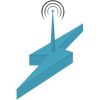Essential HTTP Status Codes to Know for SEO
HTTP status codes are three-digit numbers sent by a web server in response to a request from a client (like a browser or search engine bot). These codes communicate the status of the request, indicating whether it was successful, encountered an error, or requires redirection. For SEO, certain status codes can directly impact your site’s ranking, as they affect user experience and the way search engines index your pages.
HTTP status codes play a crucial role in determining how search engines interact with and rank your website. From indicating successful page loads to flagging errors, these codes guide search engines in indexing your site and help you maintain a smooth user experience. Understanding which HTTP status codes matter most for SEO can improve your site’s visibility and performance. In this guide, we’ll cover the most important HTTP status codes for SEO and explain why they matter.
Why HTTP Status Codes Are Important for SEO
The right HTTP status codes help search engines understand your website’s structure, handle redirects effectively, and avoid indexing errors. Misconfigured status codes can lead to:
- Poor User Experience: Broken links and inaccessible pages can frustrate users.
- SEO Penalties: Persistent errors, like 404 or 500 codes, may signal to search engines that your site has issues, which could impact rankings.
- Indexing Problems: Search engines may not properly index your site if there are errors or redirects that aren’t configured correctly.
By monitoring and managing these codes, you can ensure a healthy website for both users and search engines.
Essential HTTP Status Codes for SEO
Here’s a breakdown of key HTTP status codes that impact SEO and how they affect your site’s performance.
- 200 OK
- Meaning: This status code indicates that the request was successful and the page is available.
- SEO Impact: A 200 OK status code is ideal for SEO, as it signifies a stable and accessible page that can be indexed by search engines. It’s what you want for all primary pages on your site.
- 301 Moved Permanently
- Meaning: The resource has been permanently moved to a new URL, and all future requests should be directed to the new location.
- SEO Impact: A 301 redirect passes the majority of SEO value (or “link juice”) from the old URL to the new one. It’s crucial for SEO when restructuring a site, changing URLs, or consolidating content. Properly configured 301 redirects prevent link equity loss and help maintain rankings.
- 302 Found (Temporary Redirect)
- Meaning: The resource is temporarily located at a different URL, but it will eventually be accessible at the original location.
- SEO Impact: 302 redirects are not ideal for SEO when used for permanent changes, as search engines may continue to index the old URL instead of transferring ranking signals to the new URL. Use 302 redirects only for temporary changes or testing, not for permanent redirection.
- 404 Not Found
- Meaning: The server cannot find the requested resource, usually because it was deleted or the URL is incorrect.
- SEO Impact: 404 errors can harm SEO if they are common across your site, as they indicate broken links or missing content. A few 404s are normal, but monitoring and resolving them is important to maintain a healthy site structure. Redirecting 404 pages with valuable backlinks to relevant pages can help retain link equity.
- 410 Gone
- Meaning: The resource has been permanently removed and will no longer be available at the requested URL.
- SEO Impact: The 410 Gone status tells search engines that a page has been intentionally removed. While 404 errors may eventually drop from search engine indexes, 410 status codes prompt quicker removal. Use 410 for permanently removed content that you do not intend to replace or redirect.
- 500 Internal Server Error
- Meaning: The server encountered an unexpected condition that prevented it from fulfilling the request.
- SEO Impact: 500 errors can negatively impact SEO, as they indicate server issues that prevent pages from loading. Persistent 500 errors could lead to de-indexing of pages, so it’s crucial to monitor and fix server issues promptly.
- 503 Service Unavailable
- Meaning: The server is currently unable to handle the request due to maintenance or overload but should be available again soon.
- SEO Impact: A 503 Service Unavailable status tells search engines that the site is temporarily down. It’s useful for planned maintenance, as it prevents search engines from de-indexing the page. Be sure to set the Retry-After header to indicate when the server will be back online.
- 429 Too Many Requests
- Meaning: The client has sent too many requests in a given time frame, and the server is temporarily blocking further requests.
- SEO Impact: Frequent 429 errors may prevent search engines from crawling your site effectively, especially if their crawlers are being rate-limited. To prevent this, configure your server to handle the search engine’s crawl rate, or set up crawl-delay in your robots.txt file.
How to Monitor and Manage HTTP Status Codes for SEO
Here are some methods to track and manage HTTP status codes effectively:
- Use Google Search Console: Google Search Console is a free tool that provides insights into any crawling or indexing errors on your site, including HTTP status codes. Regularly check it to address issues like 404s and 500 errors.
- Try SEO Audit Tools: Tools like Ahrefs, SEMrush, and Screaming Frog provide comprehensive website audits and identify status codes across your site. These tools can help you locate broken links, misconfigured redirects, and server issues.
- Set Up Server Logs: Analyzing server logs can provide insights into status codes for every request made to your site. This can be especially helpful for identifying frequent errors or patterns over time.
- Use Plugins for WordPress Sites: Plugins like Redirection and Yoast SEO allow you to manage redirects and track errors, helping you handle 301 redirects, 404 errors, and other issues that impact SEO.
- Regular Site Audits: Conducting regular audits of your website is key to staying on top of status codes and ensuring a healthy SEO structure.
Conclusion
HTTP status codes play an integral role in how search engines crawl, index, and rank your site. By understanding key status codes like 200 OK, 301 Moved Permanently, 404 Not Found, and 503 Service Unavailable, you can manage your website’s SEO effectively. Regular monitoring and proactive management of these codes help maintain a smooth user experience and improve your search engine rankings.
SternHost’s scalable and secure hosting plans ensure that your website remains online, even during unexpected issues. Looking for a reliable hosting partner? Try SternHost for superior hosting, domain registration, and WordPress hosting solutions tailored to your needs.











